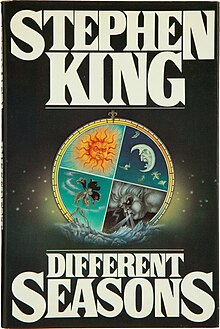Dan Simmons is an American science fiction and horror writer. He is the author of the Hyperion Cantos and the Ilium/Olympos cycles, among other works which span the science fiction, horror, and fantasy genres, sometimes within a single novel. Simmons's genre-intermingling Song of Kali (1985) won the World Fantasy Award. He also writes mysteries and thrillers, some of which feature the continuing character Joe Kurtz.
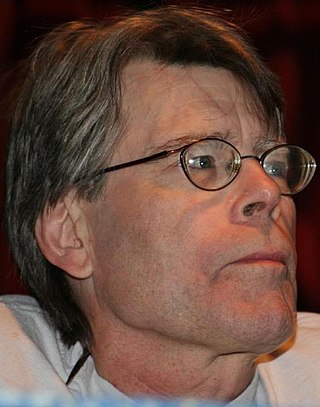
Stephen Edwin King is an American author. Called the "King of Horror", he has also explored other genres, among them suspense, crime, science-fiction, fantasy and mystery. He has also written approximately 200 short stories, most of which have been published in collections. His debut, Carrie (1974), established him in horror. Different Seasons (1982), a collection of four novellas, was his first major departure from the genre. Among the films adapted from King's fiction are Carrie, Christine, The Shining, The Dead Zone, Stand by Me, Misery, Dolores Claiborne, The Shawshank Redemption, The Green Mile and It. He has published under the pseudonym Richard Bachman and has co-written works with other authors, notably his friend Peter Straub and sons Joe Hill and Owen King. He has also written nonfiction, notably On Writing: A Memoir of the Craft.
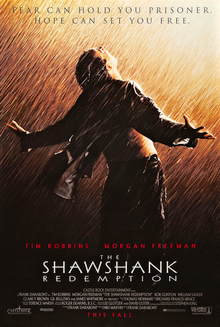
The Shawshank Redemption is a 1994 American prison drama film written and directed by Frank Darabont, based on the 1982 Stephen King novella Rita Hayworth and Shawshank Redemption. The film tells the story of banker Andy Dufresne, who is sentenced to life in Shawshank State Penitentiary for the murders of his wife and her lover, despite his claims of innocence. Over the following two decades, he befriends a fellow prisoner, contraband smuggler Ellis "Red" Redding, and becomes instrumental in a money laundering operation led by the prison warden Samuel Norton. William Sadler, Clancy Brown, Gil Bellows, and James Whitmore appear in supporting roles.
Rita Hayworth and Shawshank Redemption is a realist novella by Stephen King. It was first published in 1982 by Viking Press in his collection Different Seasons. It was later included in the 2009 collection Stephen King Goes to the Movies. The plot follows former bank vice president Andy Dufresne, who is wrongly convicted of murdering his wife and her lover and ends up in Shawshank State Penitentiary, where corruption and violence are rampant.

Ramsey Campbell is an English horror fiction writer, editor and critic who has been writing for well over fifty years. He is the author of over 30 novels and hundreds of short stories, many of them winners of literary awards. Three of his novels have been adapted into films.

Kim James Newman is an English journalist, film critic and fiction writer. He is interested in film history and horror fiction—both of which he attributes to seeing Tod Browning's Dracula at the age of eleven—and alternative history. He has won the Bram Stoker Award, the International Horror Guild Award and the BSFA award.

Michael Shea was an American fantasy, horror, and science fiction author. His novel Nifft the Lean won the World Fantasy Award, as did his novella Growlimb.
Michael Lawson Bishop was an American author. Over five decades and in more than thirty books, he created what has been called a "body of work that stands among the most admired and influential in modern science fiction and fantasy literature."
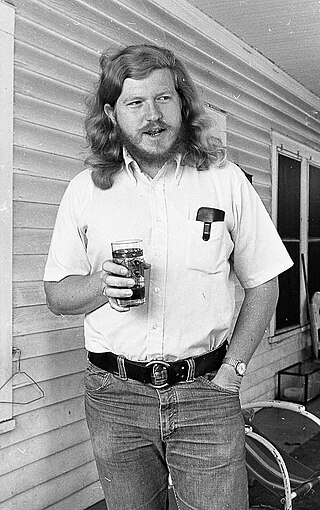
Karl Edward Wagner was an American writer, poet, editor, and publisher of horror, science fiction, and heroic fantasy, who was born in Knoxville, Tennessee and originally trained as a psychiatrist. He wrote numerous dark fantasy and horror stories. As an editor, he created a three-volume set of Robert E. Howard's Conan the Barbarian fiction restored to its original form as written, and edited the long-running and genre-defining The Year's Best Horror Stories series for DAW Books. His Carcosa publishing company issued four volumes of the best stories by some of the major authors of the so-called Golden Age pulp magazines. He is possibly best known for his creation of a series of stories featuring the character Kane, the Mystic Swordsman.

Frank Árpád Darabont is an American screenwriter, director and producer. He has been nominated for three Academy Awards and a Golden Globe Award. In his early career, he was primarily a screenwriter for such horror films as A Nightmare on Elm Street 3: Dream Warriors (1987), The Blob (1988) and The Fly II (1989). As a director, he is known for his film adaptations of Stephen King novellas and novels, such as The Shawshank Redemption (1994), The Green Mile (1999), and The Mist (2007).
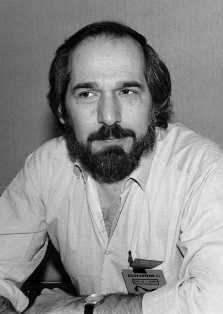
Charles Lewis Grant was an American novelist and short story writer specializing in what he called "dark fantasy" and "quiet horror". He also wrote under the pseudonyms of Geoffrey Marsh, Lionel Fenn, Simon Lake, Felicia Andrews, Deborah Lewis, Timothy Boggs, Mark Rivers, and Steven Charles.
Theodore "Eibon" Donald Klein is an American horror writer and editor.
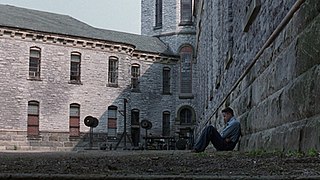
Shawshank State Prison is a fictional New England state prison in the state of Maine. It serves as the primary location in the novella Rita Hayworth and Shawshank Redemption by Stephen King, as well as its subsequent film adaptation. The prison has also been mentioned in several other works by King.
Mark V. Ziesing is an American small press publisher and bookseller, founded by Mark Ziesing. Active as a bookseller, from 1972 to present; Ziesing was in publishing, from the mid-1980s into 1998. The Ziesing publishing imprint specialized in science fiction, horror, and other forms of speculative fiction. Originally based in Willimantic, Connecticut and in partnership with his brother Michael, he published two books by Gene Wolfe under the name Ziesing Brothers.

Dennis William Etchison was an American writer and editor of fantasy and horror fiction. Etchison referred to his own work as "rather dark, depressing, almost pathologically inward fiction about the individual in relation to the world". Stephen King has called Dennis Etchison "one hell of a fiction writer" and he has been called "the most original living horror writer in America".

The Dollar Baby was an arrangement in which American author Stephen King would grant permission to students and aspiring filmmakers or theater producers to adapt one of his short stories for $1. King retains the rights to his work, but as he began to experience commercial success, he decided to use the Dollar Baby to help the next generation of creatives. The term may be used to refer to both the adaptation itself and the person adapting it; for example, "The Sun Dog" was made as a Dollar Baby and filmmaker Matt Flesher became a Dollar Baby upon adapting it.

Robert Paul Holdstock was an English novelist and author best known for his works of Celtic, Nordic, Gothic and Pictish fantasy literature, predominantly in the fantasy subgenre of mythic fiction.

Joseph Hillström King, better known by the pen name Joe Hill, is an American writer. His work includes the novels Heart-Shaped Box (2007), Horns (2010), NOS4A2 (2013), and The Fireman (2016); the short story collections 20th Century Ghosts (2005) and Strange Weather (2017); and the comic book series Locke & Key (2008–2013). He has won awards including Bram Stoker Awards, British Fantasy Awards, and an Eisner Award.

The Mist is a 2007 American science-fiction horror film based on the 1980 novella The Mist by Stephen King. The film was written, directed and co-produced by Frank Darabont. Darabont had been interested in adapting The Mist for the big screen since the 1980s. The film features an ensemble cast, including Thomas Jane, Marcia Gay Harden, Nathan Gamble, Andre Braugher, Sam Witwer, Toby Jones, Frances Sternhagen, Buck Taylor, Robert Treveiler, William Sadler, Alexa Davalos, David Jensen, Chris Owen, Andy Stahl and future The Walking Dead stars Jeffrey DeMunn, Laurie Holden, Melissa McBride and Juan Gabriel Pareja.
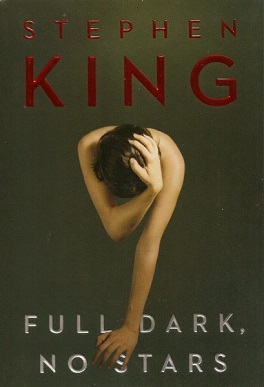
Full Dark, No Stars, published in November 2010, is a collection of four novellas by American author Stephen King, all dealing with the theme of retribution. One of the novellas, 1922, is set in Hemingford Home, Nebraska, which is the home of Mother Abagail from King's epic novel The Stand (1978), the town the adult Ben Hanscom moves to in It (1986), where Alice and Billy stop for a while towards the end of the book Billy Summers, and the setting of the short story "The Last Rung on the Ladder" (1978). The collection won the 2011 Bram Stoker Award for Best Collection, and the 2011 British Fantasy Award for Best Collection. Also, 1922 was nominated for the 2011 British Fantasy Award for Best Novella.
